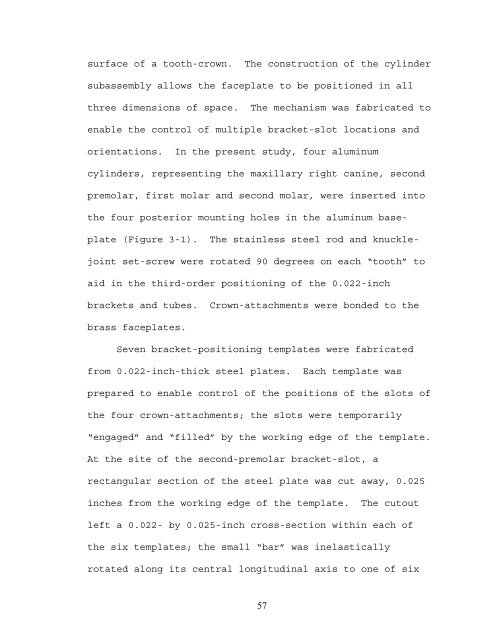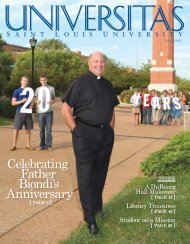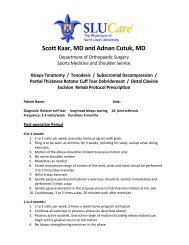The effects of third-order torque and self - Saint Louis University
The effects of third-order torque and self - Saint Louis University
The effects of third-order torque and self - Saint Louis University
Create successful ePaper yourself
Turn your PDF publications into a flip-book with our unique Google optimized e-Paper software.
surface <strong>of</strong> a tooth-crown. <strong>The</strong> construction <strong>of</strong> the cylinder<br />
subassembly allows the faceplate to be positioned in all<br />
three dimensions <strong>of</strong> space. <strong>The</strong> mechanism was fabricated to<br />
enable the control <strong>of</strong> multiple bracket-slot locations <strong>and</strong><br />
orientations. In the present study, four aluminum<br />
cylinders, representing the maxillary right canine, second<br />
premolar, first molar <strong>and</strong> second molar, were inserted into<br />
the four posterior mounting holes in the aluminum base-<br />
plate (Figure 3-1). <strong>The</strong> stainless steel rod <strong>and</strong> knuckle-<br />
joint set-screw were rotated 90 degrees on each “tooth” to<br />
aid in the <strong>third</strong>-<strong>order</strong> positioning <strong>of</strong> the 0.022-inch<br />
brackets <strong>and</strong> tubes. Crown-attachments were bonded to the<br />
brass faceplates.<br />
Seven bracket-positioning templates were fabricated<br />
from 0.022-inch-thick steel plates. Each template was<br />
prepared to enable control <strong>of</strong> the positions <strong>of</strong> the slots <strong>of</strong><br />
the four crown-attachments; the slots were temporarily<br />
“engaged” <strong>and</strong> “filled” by the working edge <strong>of</strong> the template.<br />
At the site <strong>of</strong> the second-premolar bracket-slot, a<br />
rectangular section <strong>of</strong> the steel plate was cut away, 0.025<br />
inches from the working edge <strong>of</strong> the template. <strong>The</strong> cutout<br />
left a 0.022- by 0.025-inch cross-section within each <strong>of</strong><br />
the six templates; the small “bar” was inelastically<br />
rotated along its central longitudinal axis to one <strong>of</strong> six<br />
57
















